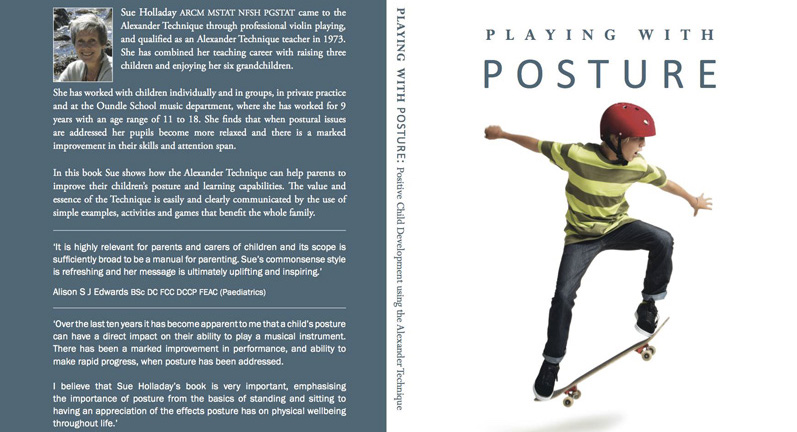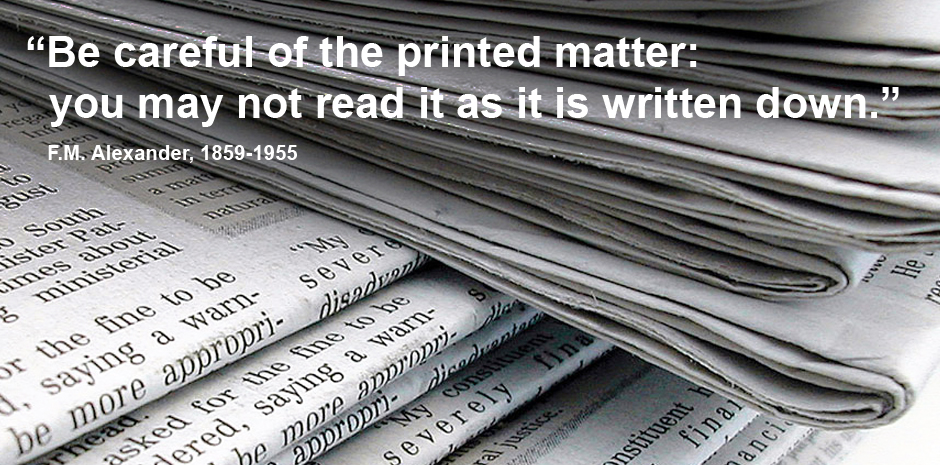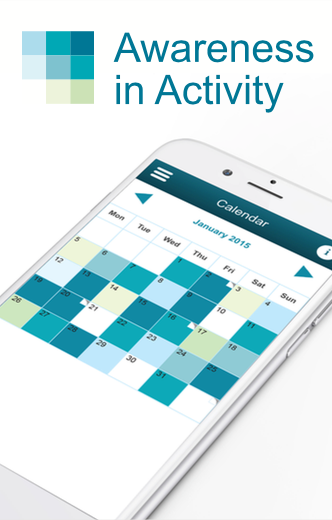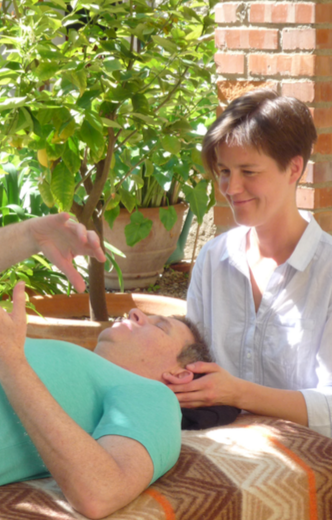Claire Rechnitzer, review
“Taking time is as important as saying please and thank you – constant parental reminders are needed for the ‘magic words’ to become a habit” says Sue Holladay in her new book Playing with Posture; Positive Child Development using the Alexander Technique.
Providing an overview of developmental stages from infancy to teenage years, Holladay describes the psycho-physical challenges associated with growth, learning, training and character building. She offers adults age-appropriate ways to encourage their children or students to notice and choose their conduct and attitude. The book references many known methods of creating the best conditions to promote positive child development, and shows how these can be supported by using principles of Alexander Technique. Holladay explains these principles in clear concise language, simplifying some of the instructions so that they can be understood and used by people with little or no Alexander Technique experience.
Playing with Posture empowers adults to notice signs of poor use, and encourages children to seek objective feedback to their own posture through activities that promote self reflection, good articulation and easy coordination. Relevant activities are described throughout the text and many others are suggested in an appendix that categorizes games under such headings as energy games, balancing games, calming strategies, or knowing-your-body games. My favorites are games that engage resistance such as “Tonifying and Dispersing”, a game that involves manipulating a rolling pin in a pedaling motion while leaning back against a wall. Also intriguing are partner or group games that employ physical contact as a means to exploring poise and coordination.
Holladay uses a variety of “Magic words” that can be adopted as short-hand reminders; “Stop, Think, Act” or “Wait! Now let’s grow tall. Smile with our bodies. Shazzan!” She shows how thinking in metaphors such as “Change Gear” or “Smile with your Shoulders” can be helpful when the context is clear and used without criticism.
Packed with interesting facts, insightful observations and useful suggestions covering an array of topics including time management, organizational skills, self-care, self-expression and confidence building, this book can be read cover-to-cover or by using the table of contents to locate relevant sections. Holladay’s generous recognition of the work of other Alexander Technique teachers as well as of many other important approaches to development and education make this book a great gift for new parents or educators, and a useful resource for Alexander Technique teachers who work with children or their caregivers.
Playing with Posture : Positive Child Development Using the Alexander Technique








